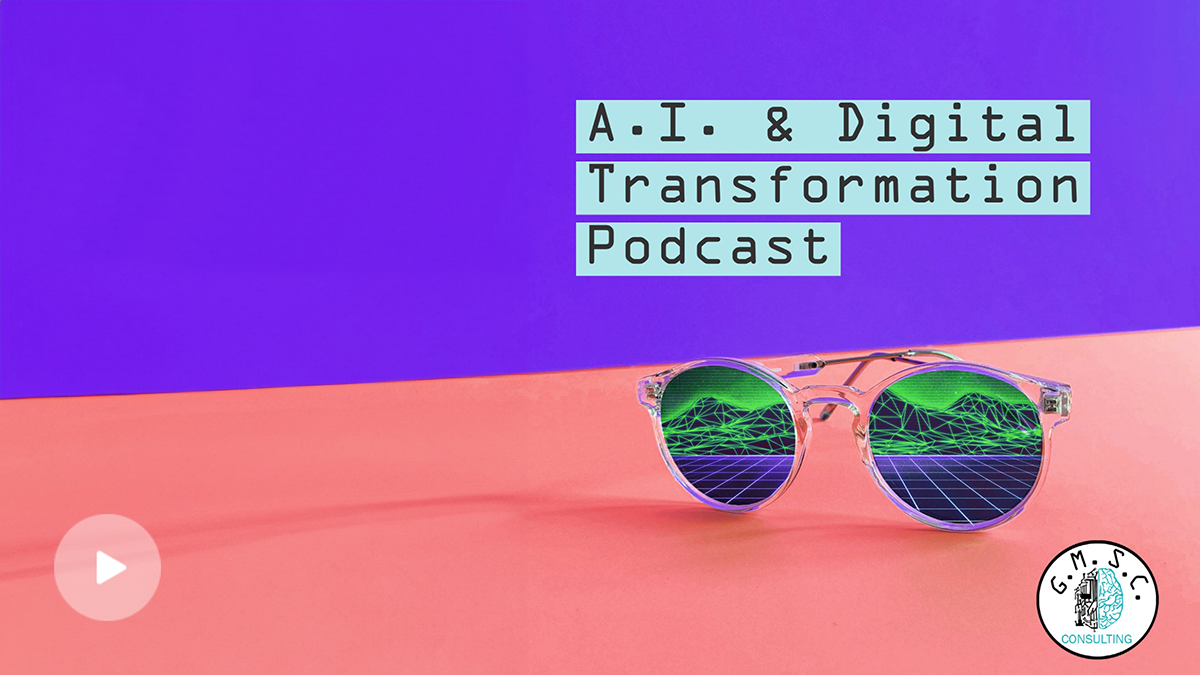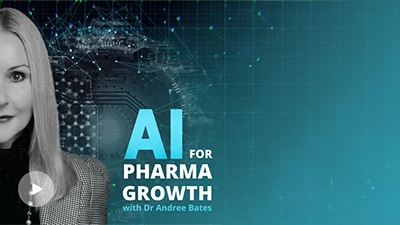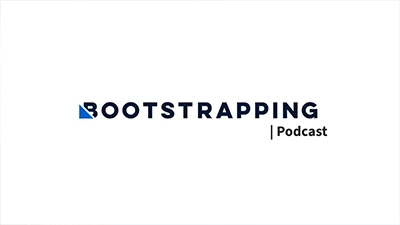SHIFT podcast is available on Pandora, Stitcher, TuneIn, Spotify, Apple Music, Amazon Music, and more.
On SHIFT:
Hosted by Jennifer Strong, SHIFT is a new weekly podcast taking a closer look at the far-reaching impact of automation on our daily lives. From policy to process, we seek to understand how lives are changing alongside rapid breakthroughs in frontier technologies and artificial intelligence. Join us as we navigate the challenges and opportunities presented by this reshaped reality.
Casper:
So imagine that you are diagnosed with cancer, and a super powerful AI comes out with a conclusion that you cannot get the most efficient medicine. An answer that will not fly, or at least that I don’t think we should accept, is: Computer says so.
Jennifer:
Casper Wilstrup is trying to solve AI’s black box problem by using different methods than the ones we usually hear about.
Casper:
There’s plenty of situations where the explanation is as important as the prediction. I went rather extreme with the life or death decision about a medicine, but it also applies to situations like credit scoring, credit risk scoring, or being allowed to buy a house.
Jennifer:
He’s working on something called symbolic AI that communicates how decisions are made, and why.
Casper:
It introduces a middle step where the AI generates an explanation, and then we use that explanation to create a prediction. Whereas the black-box artificial intelligence approaches goes directly for the prediction and bypasses this entire idea of understanding the underlying process.
Jennifer:
I’m Jennifer Strong, and this is SHIFT.
In this episode, we bring you the latest installment of our new oral history project. Throughout this series, we’ll be featuring the stories of breakthroughs and other key moments in emerging tech as told by those who witnessed them.
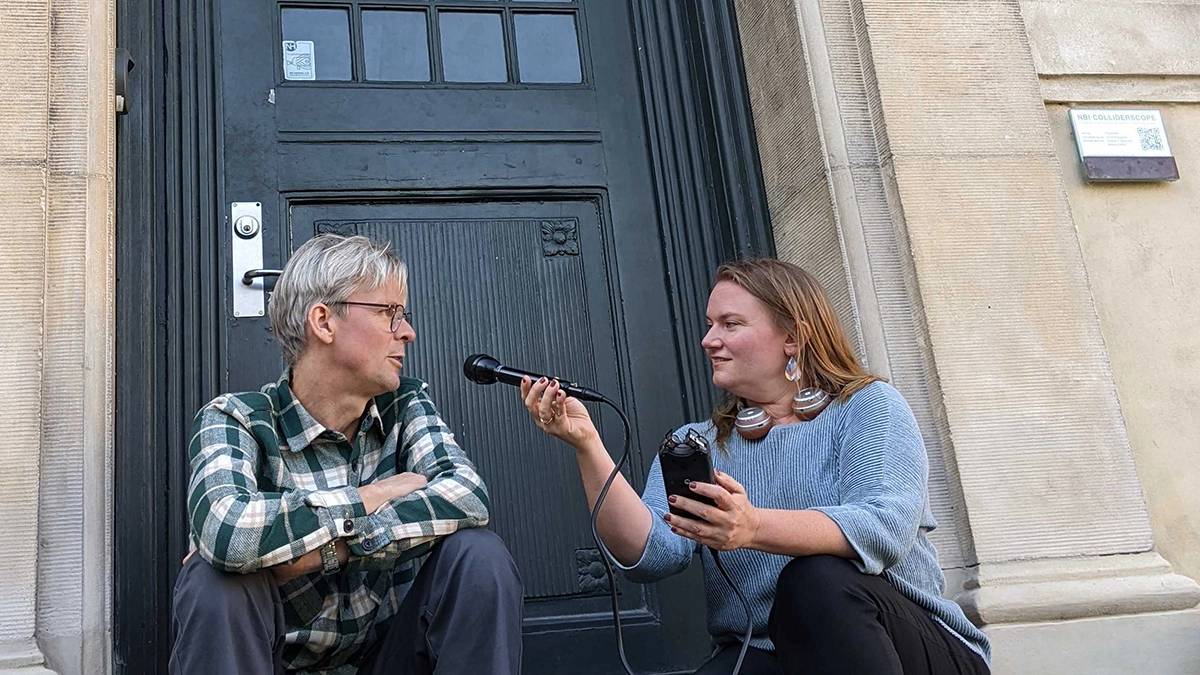
Casper Wilstrup and Jennifer Strong in front of the Niels Bohr Institute in Copenhagen.
Casper:
This was a place where I spent some of the best years of my youth. Down in the basement. Mainly because that’s where all the cool machinery was. We used to do experimental physics, actually. Didn’t require as expensive equipment as it does today. This was in the early 90s. Back then, students were the people who could code at the institute here. The professors, they knew nothing of coding. And then I was part of this new generation.
I was born in 1971, and I started coding when I was 11 on my Sinclair ZX spectrum, which was like a super popular little toy machine. So, my name is Casper Wilstrup. I am the founder and the CEO of a Danish/Spanish AI research company called Abzu that is mainly focused on symbolic artificial intelligence, which is a subfield of AI, where we try to come up with clear and understandable explanations of phenomena that the AI is thinking about. Which sets it apart from what is classed as the opposite, the sub-symbolic artificial intelligence approaches, of which neural networks are by far the most well known.
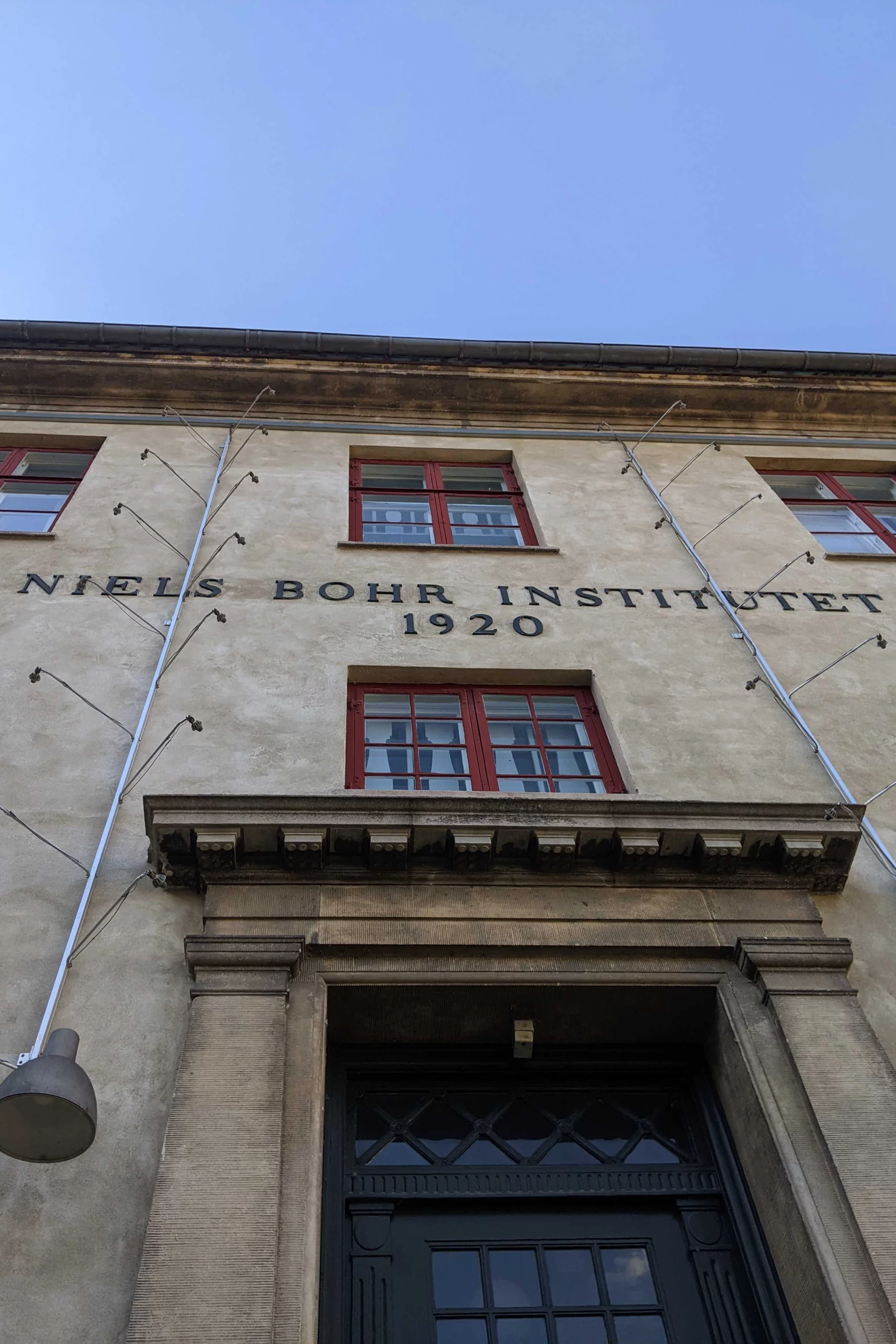
The Niels Bohr Institute in northern Copenhagen.
We’re sitting at the main entrance of the Niels Bohr Institute in northern Copenhagen. The place that Niels Bohr founded in 1920, the so-called Copenhagen School of Quantum Physics. And this has been the center of particle and nuclear physics in Copenhagen.
I actually never graduated because I did my first start up company in ’99, based on an idea that we got when we were building high performance computers right in there behind those walls. Me and a friend of mine, we built this device that allowed easier construction of high performance computer systems, and that then became a company, and that shaped the rest of my career.
So I am an entrepreneur. I’ve been involved in a lot of different startup companies, but always with hard analytical data analysis things at its center. So the harder, the more compute requiring problems are, the more I enjoy them.
Symbolic artificial intelligence is a very obvious match for anything scientific. Scientists ask questions about “why.” They don’t only want to predict what happens in a given situation, they want to understand the process that governs what happens. So symbolic artificial intelligence, it essentially delivers answers along with the theory for how to arrive at that answer. So if you feed it, let’s say, Tycho Brahe’s data about the orbit of Mars “in,” Kepler’s laws of planetary motion is what comes out.
And Abzu has been an R&D company that has focused a lot on inventing new approaches — reinventing, you could say — the principles in symbolic AI and bringing that to… particularly science. We worked a lot in disease understanding and in drug development with Pharma companies over the years.
Now we’ve fuzed our symbolic artificial intelligence together with sub-symbolic methods, the neural networks, to create what we call a hybrid AI that is able to get the best out of both.
Hybrid AI… In space.
So an example is our work with NASA GeneLab. There’s a lot of speculation about why astronauts get rashes. It could be the less than adequate soaping, water being so scarce in space that you really, you know, don’t wash enough. And that could be a reason. It could also be something with the environment. It could be radiation. And at least what we can see, there is certainly a big genetic component. We know that the skin and the organisms of astronauts actually change quite rapidly and in detrimental ways when they’re in space, but it’s a little hard to study the way scientifically rigorous approach. So humans are still sending animals into space to do these things. And one of those animals are mice. And together with NASA GeneLab to study how and what governs the changes to the cells, particularly the skin cells of the mice, because those are the ones that change the fastest.
But the bigger picture here is to try to understand the genetic makeup of organisms that are most impacted by the environment that you meet on, in this case, the International Space Station.
So, in science, we’re looking for the simplest possible theory that will fit the data. So, having two theories — one complex, one simple — we prefer the simple over the complex one, if they have the same predictive accuracy. That’s the scientific method or principle that we call Occam’s razor.
Sub-symbolic artificial intelligence, neural networks, are inherently bad at Occam’s razor. They will greedily consume everything they can from the data set, to try to squeeze the last bit of predictability out of the data set.
So, in the space example, a neural network could be — and has been applied — to try to predict whether or not a certain mouse will react in a certain way when exposed to space. But these models take the entire genetic makeup of the mouse into consideration, so you end up with a model that takes the mouse’s genome as input, and how likely it is to be affected by the space environment as output.
And that is bad in various ways. First off: Super inconvenient, because do you really want to sequence the full genome to make this relatively simple prediction of whether or not you will react badly to the space environment? That’s a practical limitation that makes it hard to use as any kind of tool in practice, but it also takes away any possibility of understanding the underlying process. You just say: 3 billion base pairs “in,” and one prediction “out”, right? What’s going on?
And that’s what you get with a neural network. With symbolic artificial intelligence, we identified a two-gene model, not linear, but a two-gene, simple model that was able to accurately predict whether or not these mice would experience the adverse effects on their skin. And you have a model that’s easy to apply in practice. You can actually use this in a diagnostic or prognostic setting.
But secondly, it also gives you an opportunity to think about what happens. Why are these genes actually impacting the mice in that way. And you can relate it to other previously known information about the same genes in a different setting.
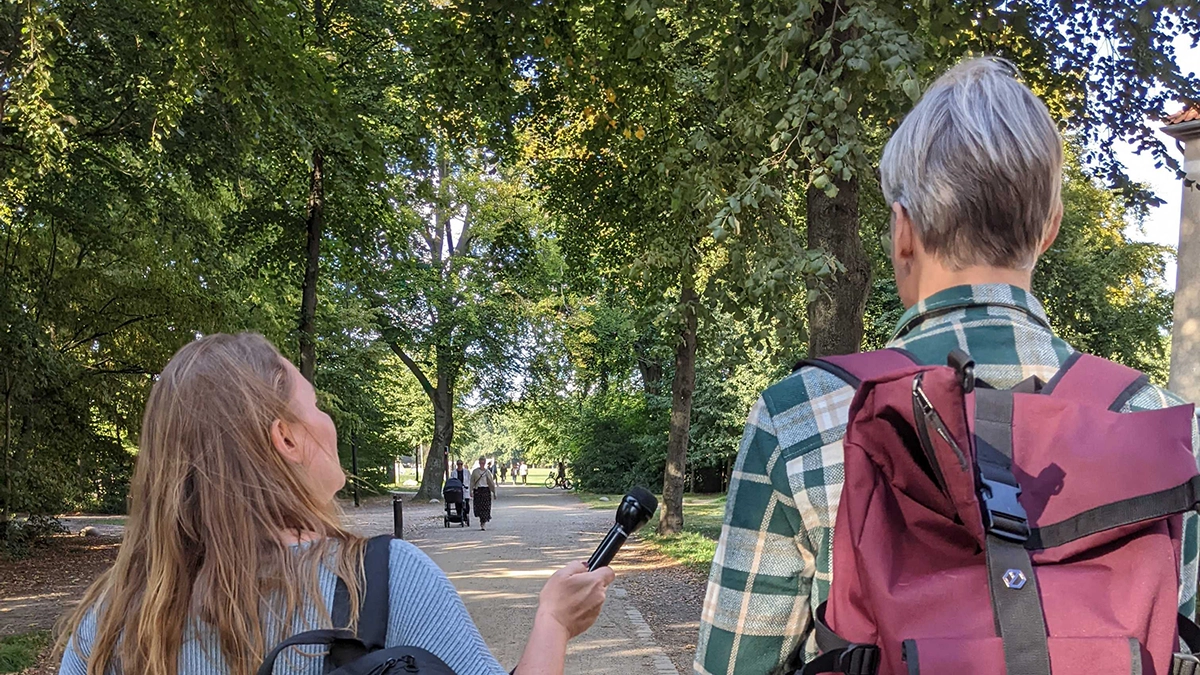
Jennifer Strong recording Casper Wilstrup for the SHIFT podcast at Fælledparken behind the Niels Bohr Institute in northern Copenhagen.
Searching through infinite space to find a solution.
So one of the big problems when doing symbolic artificial intelligence is that you’re actually searching through an infinite space of possible explanations. So, if you’re trying to figure out if something is related to some other thing, in one way or another, then if you just start writing down the ways those relations could be, you’ll never finish.
That’s essentially an infinite list. And that’s why you can’t really exhaustively say that you’ve searched through all possible scientific theories. And that’s good news for scientists, because that means that they’ll never run out of things to do. They have to be the intuition or the brain that comes up with the interesting things to try.
And here I think that the human brain is leveraging two core principles. One is the intuition that allows the brain to guess in some weird way based on prior, not entirely related, knowledge: What is worth exploring?
But at the same time, we also have this other property that we are massively parallel thinking unit. We think a lot of thoughts at the same time. We don’t know we’re doing that, but we do. So when we get an idea in the middle of the night, or something like that, it’s actually because we’ve been thinking maybe millions of things. And then the good thing popped into our mind.
So in order to mimic that, in order to actually find good explanations in this infinite set of all possible explanations, we also have to combine a good intuition about what to try with the ability to explore a essentially infinite space of explanations.
The intuition part in our system comes from the sub-symbolic methods, transformer models, and other approaches that are related. But the most interesting thing I’d say about our technology is the way we deal with the with the massive search around the things that we actually do want to try.
So once the intuition part has decided what to try, then in order to test — maybe, let’s say, maybe billions of different solutions that still fit the bill — we have modeled all of that as a quantum field. So we actually take the entire problem of input and output and translate it into something that is akin to the way you would formulate a quantum field in the Feynman formulation.
It’s a way where you express all possible paths a particle can take through space, and then you add all those up together (you integrate them, as we say, which is why it’s called the Feynman Path Integral).
And that’s actually a very similar problem: You have particles traveling through space along an infinite set of trajectories at the same time. We have possible explanations from A to B that can be composed in such a way that there’s also an infinite set of paths. And we tackle those two problems in a way that’s very similar.
The QLattice®.
So we translate the entire domain into a mathematical abstraction that we call the QLattice. And the QLattice is this idea of trying to map a space between the things we have as predictors and the thing we want to predict. And then we use the same principles as you do in quantum field theory, a principle or a method actually, called quantum lattice gauge simulations, to divide and conquer that space. That allows us to effectively search with very high probability the important parts of that space. And it also allows us to use a lot of tools and tricks that have been learned by quantum physicists when they built supercomputers to tackle that problem. So we can both leverage the core idea, but also some of the tricks that has allowed that to happen.
So, the end result is that the intuitive part of our algorithm can suggest interesting ideas that maybe limits us down to, say, a few million or billion options. And then we can explore that space very efficiently with the quantum or the QLattice algorithm. And, and that’s why we, we find the needle in that haystack. This difficult-to-find formula in the haystack. And I think that the combination of those two — the hybrid combination of those two — the sub-symbolic intuition and the ability to execute this massively parallel number of analyses at the same time, and actually have them learn from each other, that’s part of what the QLattice algorithm leverages, is why we can do this.
AI: The beginning of the decentralization era?
Since the Industrial Revolution, the development of our economy has been centered around the idea of products that you buy and install and run. And we’ve been through an era, the cloud era, where that has not been the norm. We have had a push in the different direction where we’ve moved more and more services into the cloud.
And I think that people have come to assume that that is just the new normal. I think that it’s going to be a relatively short interim period when you look back at this from, let’s say, 50 years from now. We’ll say, “They ran everything in the cloud from 2008 until 2025,” let’s say that.
And then we went back to the norm that you buy products and then you use them where you are. This decentralized idea of a market, and our industry, and the structure of our industry is going to revert to that. And I think that what drove the cloud economy was the dependency on information. The fact that information, the more you could collect and centralize, the more powerful your technology was.
And that’s what drove Amazon and Google and those kinds of companies to where they are today. But if you think about that, that has actually already come to an end. Most of the time when I need to consult or find information of some kind, I prefer to use my own AI, and that’s a super local device. It’s running on hardware that I control, and it’s actually as good at the information part as the centralized systems are.
And at the same time, it has all the benefits that we’ve forgotten: The robustness, the privacy, trustworthiness. And when I say the robustness, that might be actually the most important one: If my AI breaks down today, the neighbor’s AI will not be impacted at all. So there’s a lot of disadvantages to centralization that we’ve just learned to live with because of the importance of centralized information. I think that AI will go through a miniaturization phase where AI… The hardware required to run artificial intelligence is getting smaller and smaller, and it won’t be long until it runs on everything, even your coffee machine.
And at that point in time, what’s actually the point of a cloud economy? Why would you actually leverage your AI services to a cloud provider if there is no functional difference? And you’re giving away your autonomy, your privacy, and also taking a risk on the robustness side. Of course, the big cloud providers will not be the first movers here. Their business is centralized about offering this. There could also be a slight tendency on them to be the bootleggers in this situation, where they actually also have an interest in, through regulation, making sure that it’s better to run it in the cloud because you have to have it approved. Because that’s one thing that could really stop this decentralization. If small companies can build and operate and sell and deploy their own AIs, then the push for decentralization and the end of the cloud era will come from there.
Jennifer:
Not just small companies, but smaller countries too. I was in Africa two weeks ago, and your take is quite popular.
Casper:
Yes, I can imagine, because there’s also a “taking back control” element here, which is quite central, I think.
So, when I think about it, I’m thinking mainly about individuals and companies taking back control. We’ve gotten used to… That somebody can read what we do when we browse the net. But really, is that good? Why have we just accepted that?
Imagine that I took a Renaissance thinker out and said, you cannot write anything anymore without sharing it with a big company in the US. That’s how it is. So, Voltaire, if you want to write it here, Google knows what you’re writing.
I’m not really afraid of Google abusing these things. Maybe I should be, but I’m not really. But I do have a very strong desire to actually control the environment that I that I operate in, to actually have full control of my privacy and my functionality. And AI will give us that. The functionality we’re actually after can move all the way to the edge now.
And yes, for people in, let’s say, in Africa, that’s going to make a huge difference.
I was born in ’71. Got my first computer in ’81, and that was a pretty big change in the world. Suddenly you had a world where we had typewriters and TVs, and now they could be plugged together, and you could use your typewriter to write things that happened on the screen. But not only that, you could also program it to do things. And within, let’s say, 10 to 15 years, that had really changed so many things. I think we sometimes forgot how much was actually changed in that phase.
But if you think back to a manual, not even an electronic typewriter, that’s the kind of world we lived in. Then the next big revolution was in ’92 with the internet. I was actually just starting my studies in here, and I ran across the internet in ’91. The smartphone is another example. And in each of these phases, there has been a significant impact on the way we work.
We’ve been able to become more connected, more efficient in some situations, more centralized, also more decentralized. It has changed a lot of things. And a lot of jobs have been made obsolete or have been changed to such a degree that people who used to do them did not really feel up to taking them on anymore. So there’s been a lot of interesting changes to our labor market. And sometimes the AI revolution here has been compared to that.
And yes, there are some similarities, but I think it’s important to be aware of that this is also very different from those other changes. Because in all of those changes, what we’ve seen is technology making the way we work much more efficient.
And right now when people think about AI, they also tend to think about it as a tool that makes them more efficient. Think of ChatGPT or various types of generative AI. They just do things faster. The human is still the person doing it. It’s just a tool in their hand. The prospect of AI — and actually what’s closer than than I think most people realize is — AI that are more autonomous agents in a different sense, where artificial intelligence gets a high level objective and then it runs with that for a long period of time.
So it could be like a marketing objective or a data analysis objective, or things that you would normally have a human do with powerful tools. But here the tool becomes equivalent to the human. And if you take this to the extreme, you can actually imagine… I sometimes use an example where you imagine a company run only by AIs. Like you could imagine that in principle, that every single employee in the company was actually an artificial intelligence working together. So maybe there’s one boss somewhere at the top and reaping all the benefits.
But that’s a feasible scenario in at least in some industries. And in that sense, it’s a different type of automation, where automating whole workflows that are whole job functions that would require humans before. And not only are we automating job functions, we’re automating highly skilled job functions. Some of the most highly trained people in our society are working on some of these things.
So, the impact on society is going to be bigger. First of all, because… Knowledge work being automated impacts some of the most influential people in our society. There’s also going to be more resistance than when we automated the job of the elevator operators. But it also means that in the past, people have moved up to more meaningful jobs in many situations. You moved from manual labor to towards more and more knowledge work, and other people have moved towards the service sector.
Now it’s the knowledge workers themselves that are being automated. Where can they move? They can actually only move back to the service sector. That’s the only remaining place where I can see large amounts of people go for work. I’m an optimist in general, so I think things will be all right, but it’s not going to be like the other waves of automation. It just isn’t. Yeah, I don’t think people have grasped this. There’s still a tendency to think about AI as a tool, and not as a real intelligent being capable of replacing a full human and their entire job.
Jennifer:
This show is produced by me and Anthony Green with help from Emma Cillekens. It’s mixed by Garret Lang with original music from him and Jacob Gorski. Thanks for listening. I’m Jennifer Strong.
From PRX.
